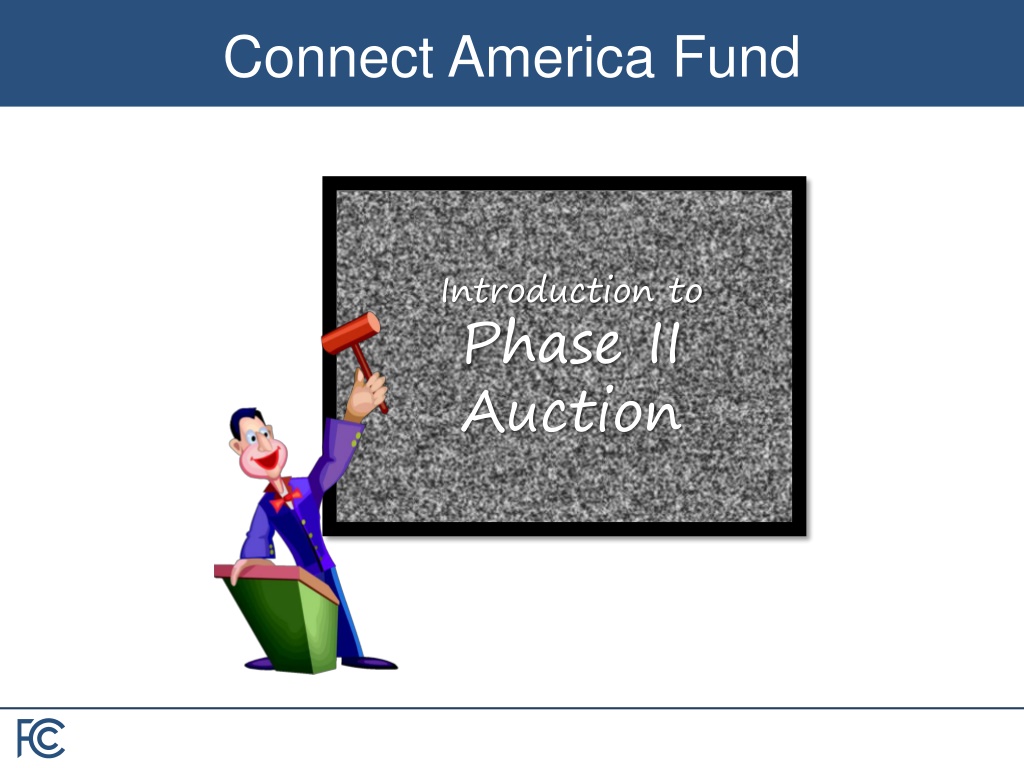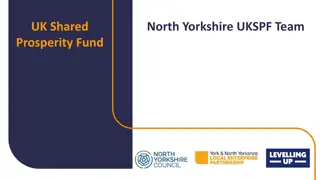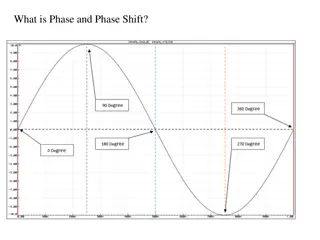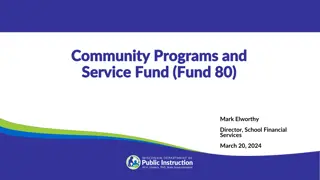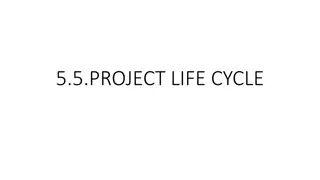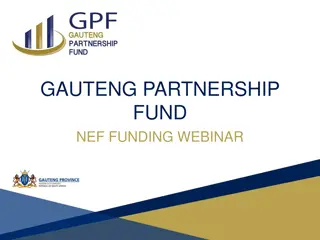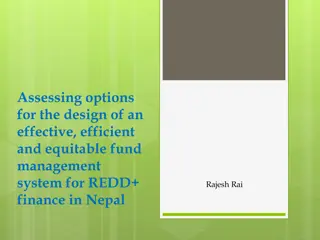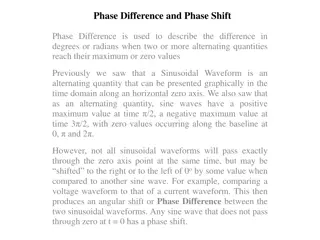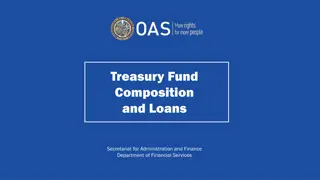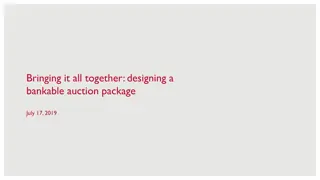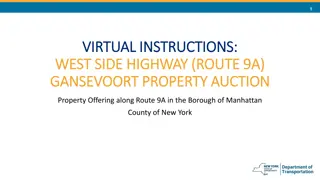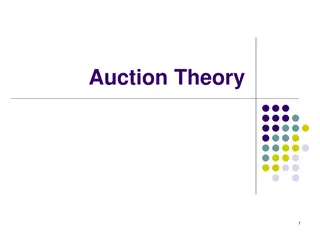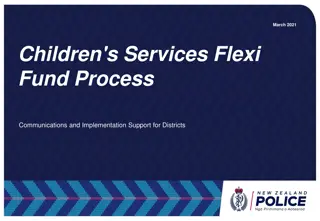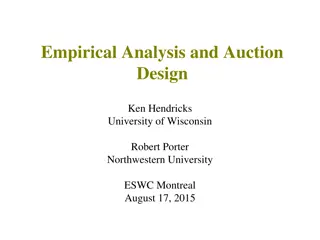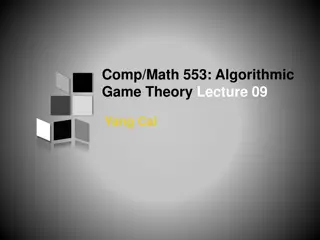Overview of Connect America Fund Phase II Auction
The Connect America Fund Phase II Auction, designated as Auction 903, seeks comments on proposed application and bidding procedures. The auction aims to distribute CAF Phase II support to specific areas effectively. Comments are due by September 18th, with replies due by October 18th. The final procedures and auction start date will be announced in a Procedures Public Notice by the Commission. The auction stems from the Commission's decision in the 2011 Universal Service Transformation Order to use competitive bidding for distributing ongoing support in areas where model-based support was declined.
Download Presentation

Please find below an Image/Link to download the presentation.
The content on the website is provided AS IS for your information and personal use only. It may not be sold, licensed, or shared on other websites without obtaining consent from the author. Download presentation by click this link. If you encounter any issues during the download, it is possible that the publisher has removed the file from their server.
E N D
Presentation Transcript
Connect America Fund Introduction to Phase II Auction
Todays Topics Brief introduction to proposed application procedures High-level description of proposed descending clock auction and bidding procedures Bidding basics for this clock auction Rounds before and after the budget clears Assigning winning bids Determining support amounts Additional topics: Package Bids, Proxy Instructions, Prohibited Communications Caveat: This presentation is not meant to substitute for the PN. For details and examples see the Technical Guide 1
Ex Parte Information With a limited exception, attending and/or participating in this webinar on proposed procedures to conduct the Connect America Fund Phase II auction made by the Commission in the recent Comment Public Notice1will not require a filing under the Commission s rules governing ex parte communications2 Presentations to Commission personnel directed to the merits or the outcome of the matters raised in the Comment Public Notice or other pending proceedings will require the filing of an ex parte notice 1 Comment Sought On Competitive Bidding Procedures And Certain Program Requirements For The Connect America Fund Phase II Auction (Auction 903), AU Docket No. 17-182 and WC Docket No. 10-90, Public Notice, FCC 17-101 (rel. Aug. 4, 2017). 2 See 47 C.F.R. 1.1200 et seq. 2
Overview The Connect America Fund Phase II Auction Comment Public Notice seeks comment on proposed application and bidding procedures Phase II Auction designated as Auction 903 Comments due September 18th; Replies due October 18th The Commission will release a Procedures Public Notice to announce the final procedures, the start date of the auction, and other important information 3
Why an Auction? In the 2011 Universal Service Transformation Order the Commission decided to use competitive bidding to distribute ongoing CAF Phase II support to areas where model-based support was declined The auction is a mechanism for determining how much of a fixed budget should go to specific providers in specific areas so that the funds can be used most cost effectively 4
Auction 903 Decisions Some key decisions for Auction 903 have already been made The auction will distribute up to $1.98 billion in support over 10 years Eligible areas include those where price cap carriers declined model support as well as certain other areas Bidders can bid to provide different levels of performance (speed and usage, latency) Supported providers will have six years to deploy service, with interim milestones Two-stage application process: a short-form application to participate in Auction 903, and, if a winning bidder, a long-form application to be authorized to receive support 5
Application Procedures Comment PN proposes to require with short-form application: (1) State(s) in which an applicant intends to bid To prohibit applicants that are commonly controlled or parties to a joint bidding arrangement from being eligible to bid in the same state (2) Technical information (e.g., operational info, spectrum access) To determine each applicant s eligibility to bid for performance tier and latency combinations based on information submitted, in addition to leveraging existing FCC data (3) Financial information (audited or unaudited) To determine each applicant s eligibility to bid based on certain financial metrics Low-scoring applicants will be subject to more in-depth review of their finances to determine eligibility 6
Bidding Basics Preview Period Place Bids Round Opens Round Closes There is still competition Bidder View Results Process Bids No more competition Auction System Auction Ends Event
Bidding Basics What is a Bid? o A request for support in a given area for a given performance tier and latency at a given percentage (which corresponds to a support amount -- more later) An area consists of the eligible census blocks in a census block group Performance tier and latency options Minimum, Baseline, Above Baseline, and Gigabit performance High and Low latency Once a round has closed, a submitted bid obliges you to provide service if you are a winning bidder If you are a winning bidder, your support amount will be at least the amount you agreed to accept by bidding Note: For ease of explanation, we focus first on bids for single areas 8
Bidding Basics Proposed Reserve Prices Each area has a reserve price limits the amount of support a bidder can receive for the area Set using the Connect America Cost Model (CAM) For each census block group (CBG), the reserve price is the sum of the support amounts calculated by the CAM for each eligible census block within the CBG Extremely high-cost census blocks will be capped at $146.10 per-location-per-month 9
Bidding Basics Implied Support Amounts Bids are submitted at a specific percentage Clock denominated in terms of a percentage To determine implied support amounts, the bid percentage is adjusted for performance tier and latency, and multiplied by the area s reserve price Each performance tier and latency combination (T+L) has an associated adjustment weight: Weights for Performance Tiers and Latencies Minimum Baseline High Latency Latency Latency Latency 90 65 70 45 Above Baseline High Latency 40 Gigabit Low High Low Low Latency 15 High Latency 25 Low Latency 0 A formula converts bid percentage, reserve price, and T+L weights to an implied support amount Final support amount will be based on a percentage that is equal to or greater than the bid percentage 10
Bidding Basics Implied Support Formula ?? ?+? 100 Implied Annual Support Amount = min ?, ? where: PP denotes the bid percentage price point ?denotes the area s reserve price ?+L denotes the combined performance tier and latency weight Min indicates the smaller of the reserve price and the result of the calculation Support cannot be greater than the reserve price for an area 11
Bidding Basics Examples of Implied Support You wish to provide Baseline service at low latency in a CBG The CBG has a reserve price (R) of $200 From the table, the combined performance tier and latency weight (T+L) is 45 The base clock percentage for the round (PP) is 150% Therefore, for this round, from the formula: 150 45 100 Implied Annual Support Amount = min 200, 200 = min {200, (1.05*200)} = min {200, 210} = $200 In the next round, the base clock percentage is 140%. So 140 45 100 Implied Annual Support Amount = min 200, 200 = min {200, (.95*200)} = min {200, 190} = $190 12
Bidding Basics You wish to provide service in a CBG with reserve price $200 and T+L = 45 Opening clock: 170% Possible bid percentages for round 1 Round 1 clock: 160% Implied support at round 1 clock: $200 Possible bid percentages for round 2 Round 2 clock: 150% Implied support at round 2 clock: $200 Possible bid percentages for round 3 Round 3 clock: 140% Implied support at round 3 clock: $190 Possible bid percentages for round 4 Round 4 clock: 130% Implied support at round 4 clock: $170 . . . . . . 13
Bidding Basics Mechanics of Multiple Round, Descending Clock Auction Each round is associated with a base clock percentage Base clock percentage starts high and decreases in each bidding round Proposed to start above 100% to allow all T+Ls to compete Is decremented by 10 percentage points in each round Each percentage corresponds to a support amount for a given area at a given T+L (using the formula) Bidding rounds continue as long as there is competition among areas for the budget or among bidders for support to a given area 14
Bidding Basics Bidding at an Intermediate Percentage What if support at 140% is enough but support at next decrement (say 130%) is not enough? Can choose to bid at 140% but not at 130% Or, can bid at an in-between percentage For prior example, recall implied support at 140% was $190 However, you are unwilling to accept less than $175 At 130%, implied support is $170 At 132.5%, implied support is $175 You can submit a bid at 132.5%, and if the bid is assigned, support will be at least $175 15
Bidding Basics Bidder s Decision As base clock percentage decreases, given the corresponding support amount for each area, do you still want to bid for an area or do you want to drop out of bidding? Hmmm . . . I really don t want to go lower than $175 . . . So I ll bid at 132.5% and that will be my final bid. 16
Bidding Basics Activity Rules Require that you do not bid for more support than you did in the prior round Measured in implied support dollars Limit the extent to which you can switch to bid on different areas Proposed switching percentage is 10% of prior round s implied support for bids made at base clock percentage Encourage straightforward bidding Make info on number of other bidders in an area more reliable For details of the activity rules, see PN or the Technical Guide 17
Rounds Before the Budget Clears Checking for Budget Clearing The budget is said to clear when the total implied support for the bids at a round s base clock percentage, counting support for no more than one bid for a given area, is equal to or less than the budget. If there are multiple bids at the base clock percentage for the same area, the system uses the most expensive option in its calculations The auction system checks whether this condition holds after each round of bidding. If the total implied support exceeds the budget, the base clock percentage is decremented again and another bidding round is conducted 18
During the Clearing Round Budget Clearing After some round, when the auction system adds up the total implied support required to fund all the areas with bids at the clock percentage, the total will fall within the auction s budget. There are two reasons for this: Implied support amounts fall for areas with bids Bidders have dropped out of bidding for some areas because the implied support corresponding to the current percentage is too low 19
During the Clearing Round Example BUDGET: $15,000 Opening clock: 170% Round 1 clock: 160% Cost* at round 1 clock: $20,000 Round 2 clock: 150% Cost at round 2 clock: $19,000 Round 3 clock: 140% Cost at round 3 clock: $17,000 CLEARING ROUND Round 4 clock: 130% Cost at round 4 clock: $14,000 . . . . . . Bidding rounds continue if there are areas with more than one bid at the round 4 clock percentage * Aggregate Cost at Base Clock Percentage 20
During the Clearing Round Clearing Round Procedures Once the total implied support at the base clock percentage falls within the budget, the just- closed round becomes the clearing round In the clearing round, the auction system will begin the process of assigning winning bids and determining final support amounts 21
During the Clearing Round Assigning Bids (High Level) The auction system first considers bids at the base clock percentage It assigns a bid for an area if there are no other bids for the same area at the base clock percentage The system then looks at bids above the clock percentage, in order of ascending percentage. For a given area, it considers assigning the first bid it comes to (that is, the one at the lowest percentage) Remember: The T+L doesn t matter for assignment, only the percentage matters (but T+L does affect the winner s support amount) 22
During the Clearing Round Finding the Clearing Percentage As the auction system assigns bids in ascending percentage order, it calculates the effect on the budget of each assigned bid, keeping a running tally of cost The clearing percentage is the point at which the budget is just enough to cover support for the assigned areas and the areas that still have competition at the base clock percentage Any areas with bids above the clearing percentage won t fit in the budget and won t be assigned 23
During the Clearing Round Second Price Rule The auction determines support at second- prices General principle: Select as winners those bidders willing to accept support at the lowest percentages, but determine support amounts based on the percentage at which competition is resolved Competition is resolved when it is clear whether a bid for an area is a winning bid 24
During the Clearing Round Determining Support Amounts - Case 1 For bids assigned for areas for which there were no other bids below the clearing percentage: Recall that at the clearing percentage, the budget is just sufficient to support the areas that are assigned and those areas that are contested at the base clock percentage So, nationwide competition among areas for support is resolved at the clearing percentage (P*) and assigned bids for areas with no other bids below the clearing percentage are supported at P* Using the formula, support for a given area is: ? ?+? 100 Annual Support Amount = min ?, ? 25
During the Clearing Round You bid to provide service with T+L = 45 in a CBG with reserve price $200 at 132.5% Case 1: There are no other bids for that CBG below the clearing percentage Round 3 clock: 140% Clearing percentage: 137.5% Your assigned support: $185 Your bid percentage: 132.5% Implied support: $175 Round 4 clock: 130% 26
During the Clearing Round Determining Support Amounts Case 2 For bids that won support for areas where there were other bids below the clearing percentage For bids assigned in the clearing round where there were two or more bids for an area at different percentages at or below the clearing percentage, the bid at the lowest percentage wins and is supported at the percentage of the next lowest bid If there are multiple bids at the base clock percentage of the clearing round, there will be more clock rounds until only one bidder for each area remains The lowest bidder for an area will win and be assigned support at the percentage at which the next lowest bidder drops out 27
During the Clearing Round You bid to provide service with T+L = 45 in a CBG with reserve price $200 at 132.5% Case 2: There is another bid for that CBG below the clearing percentage Round 3 clock: 140% Clearing percentage: 137.5% Your assigned support: $180 Percentage of other bid: 135% Your bid percentage: 132.5% Implied support: $175 Round 4 clock: 130% 28
Rounds After the Budget Clears There will be additional clock rounds with bidding only for areas with multiple bids at the base clock percentage of the previous round Same areas, same bidders, same T+L only As many rounds as needed to resolve all competition Bids at the base clock percentage carry forward to the next round. Bidders can also make lower bids, as in rounds before the budget cleared For each area, the bid at the lowest percentage wins, but is supported at the percentage at which the next lowest bidder dropped out 29
Auction Close The auction ends after the budget has cleared, and when there is no area with more than one bid at the clock percentage 30
Additional Topic: Package Bidding In addition to submitting bids for support to individual areas, a bidder can submit a single bid for a group of areas A package bid: Must be submitted at a single percentage (base clock or an intermediate percentage up to the previous base clock percentage) May include T+Ls that differ by area A given area can only be included in one bid (for the area alone or in a package including the area) Packages may be partially assigned Package bids are not all-or-nothing bids 31
Additional Topic: Package Bidding A package bid must include a minimum scale percentage Bidder-specified, capped at 80% (proposed) The bidder may be assigned support for only some of the areas in the package, as long as the total amount of implied support for those areas is at least the minimum scale percentage of the total implied support associated with the package For example, for a package bid that specifies a 70% minimum scale percentage: None of the areas will be assigned if the auction system can assign only areas with implied support totaling 65% of the total support for the package The partial package will be assigned if areas with implied support totaling 95% of the total package support can be assigned The package will be fully assigned if all of the areas in a package can be assigned 32
Additional Topic: Package Bidding Assignment procedures for package bids In the clearing round, package bids are considered for assignment in ascending percentage order, along with single area bids If the minimum scale requirement cannot be met, the package is not assigned A package bid at the base clock percentage of the clearing round, if contested, will carry forward to the next round Remainders of package bids at the base clock percentage not fully assigned will carry forward as single area bids For further details on processing package bids, see the Technical Guide 33
Additional Topic: Proxy Bidding Proposal for Proxy Instructions Would tell the auction system to submit a proxy bid in each round, down to a bidder-specified proxy percentage Instructions can apply to a single-area or a package Proxy bids are treated like manually submitted bids A bidder can change its proxy instructions at any time Safeguards against missing a bidding round 34
Additional Topic: Prohibited Communications Rule section 1.21002 prohibits Auction 903 applicants from collaborating or communicating, in any way, with any other applicant regarding any applicant s bids or bidding strategies, unless the applicants are members of a joint bidding agreement disclosed on their applications Applies to applicants starting at application deadline whether they qualify or bid Applicant includes entity applying, any party with control of the entity, any party controlled by the applicant entity or controlled by a party controlling the applicant entity Bids or bidding strategies Does not include whether or not an application has been filed Take care with communications to third parties that may be conduits Consider past guidance on this and related rules for spectrum auctions (e.g., DA 15-1129, rel. Oct. 6, 2015) 35
Additional Information Additional information, including links to documents referred to in this presentation, is available at www.fcc.gov/connect-america-fund-phase-ii-auction Please email any questions to auction903@fcc.gov 36
